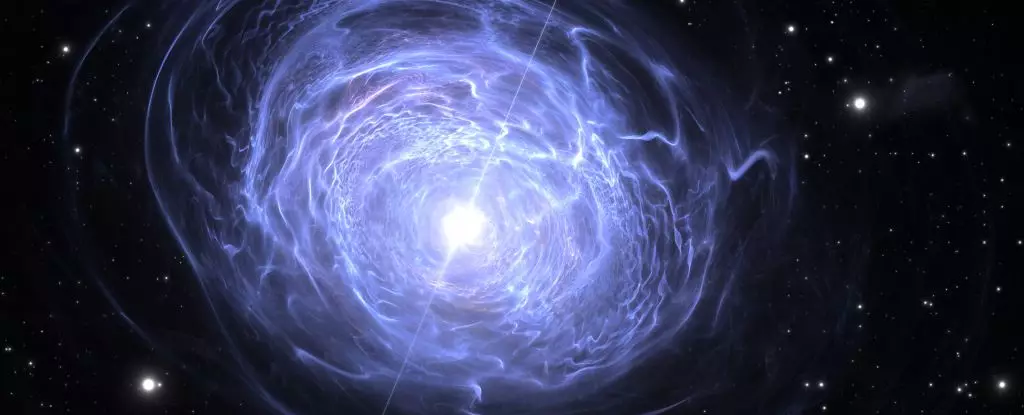Recently, astronomers have detected a peculiar signal originating from a neutron star named ASKAP J193505.1+214841.0, also known as ASKAP J1935+2148. This neutron star, located approximately 15,820 light-years away from Earth in the Milky Way, has left scientists perplexed due to its irregular pulsation patterns. Unlike the typical pulsars, magnetars, and base neutron stars, ASKAP J1935+2148 exhibits a unique behavior characterized by varying pulse intensities, irregular periods of no pulses, and distinct polarization properties. This enigmatic celestial object challenges our current understanding of neutron star evolution, shedding light on the complexities of these ultra dense remnants of massive stars.
Neutron stars, formed from the remnants of massive stars that have undergone supernova explosions, are incredibly dense objects with masses up to 2.3 times that of the Sun compressed into a sphere only 20 kilometers across. These stellar corpses can manifest in different forms, including pulsars that emit beams of radio waves as they rotate, magnetars with intense magnetic fields, and conventional neutron stars that exhibit minimal activity. However, ASKAP J1935+2148 defies categorization based on existing neutron star classifications, highlighting the gaps in our knowledge regarding these cosmic entities.
Upon close observation, astronomers discovered that ASKAP J1935+2148 displays a regular pulsation period of 53.8 minutes, accompanied by unconventional pulsation modes. One of these modes emits exceptionally bright pulses with linear polarization, only to abruptly cease pulsations for a period before resuming at significantly reduced intensity with circular polarization. These erratic changes in pulsation behavior challenge the conventional models of neutron star evolution, indicating that ASKAP J1935+2148 may represent a novel subtype of magnetars transitioning into pulsars.
In recent years, astronomers have identified several other celestial objects in the southern sky exhibiting peculiar signal emissions akin to ASKAP J1935+2148. Objects such as GLEAM-X J162759.5-523504.3, GPM J1839-10, and GCRT J1745-3009 have displayed distinctive pulsation characteristics, hinting at potential connections among these enigmatic entities. Researchers speculate that these objects, including ASKAP J1935+2148, may belong to a new class of magnetars undergoing evolutionary transitions, with varying spin periods and radio emission properties.
The unprecedented findings associated with ASKAP J1935+2148 pose intriguing challenges to astrophysical models of stellar evolution and neutron star behavior. By unraveling the mysteries surrounding this enigmatic neutron star and exploring its interstellar connections, astronomers aim to enhance our understanding of neutron star diversity and evolution processes. Future investigations utilizing advanced telescopes and observational techniques may provide further insights into the fundamental nature of ASKAP J1935+2148 and its implications for the broader field of astrophysics.


Leave a Reply